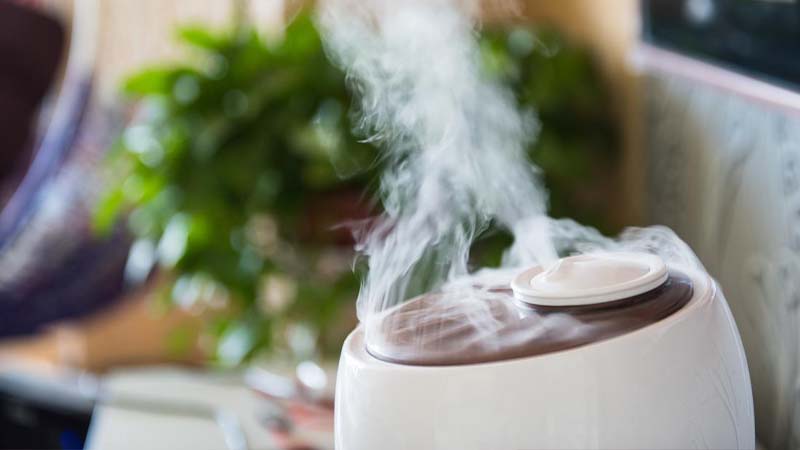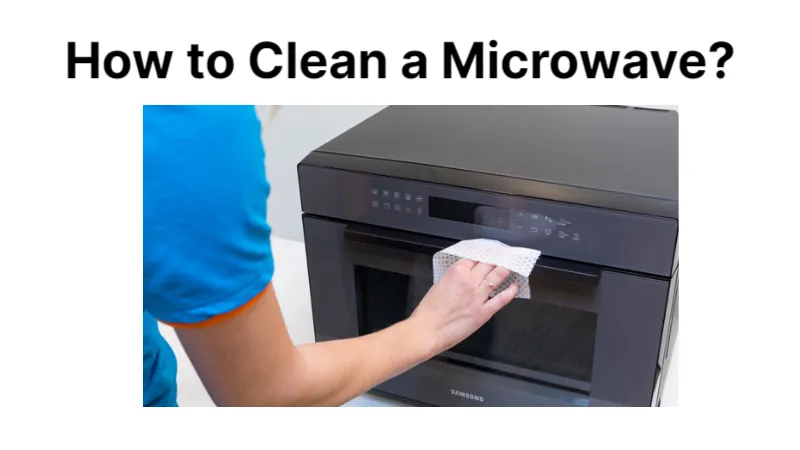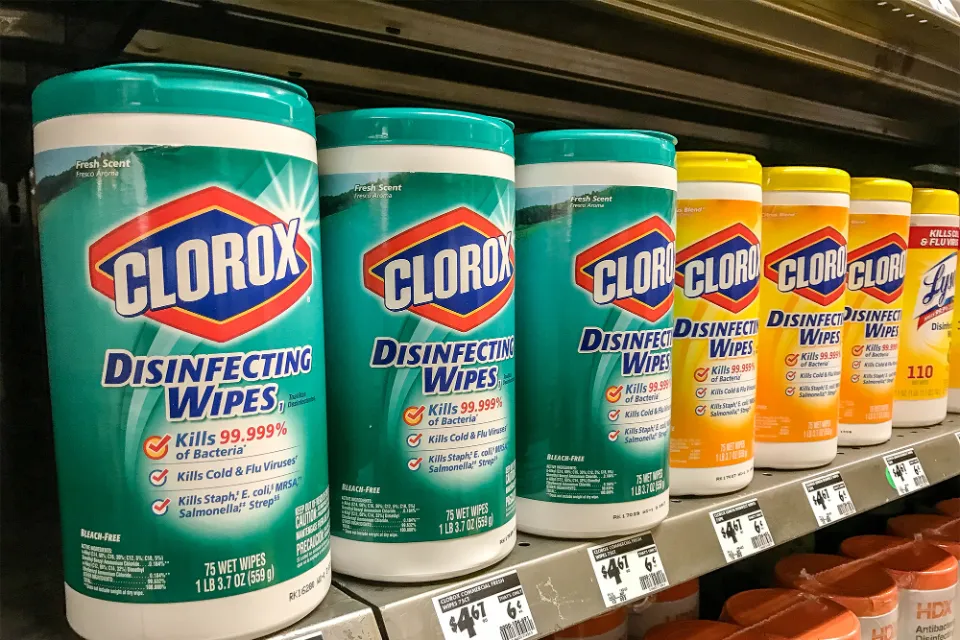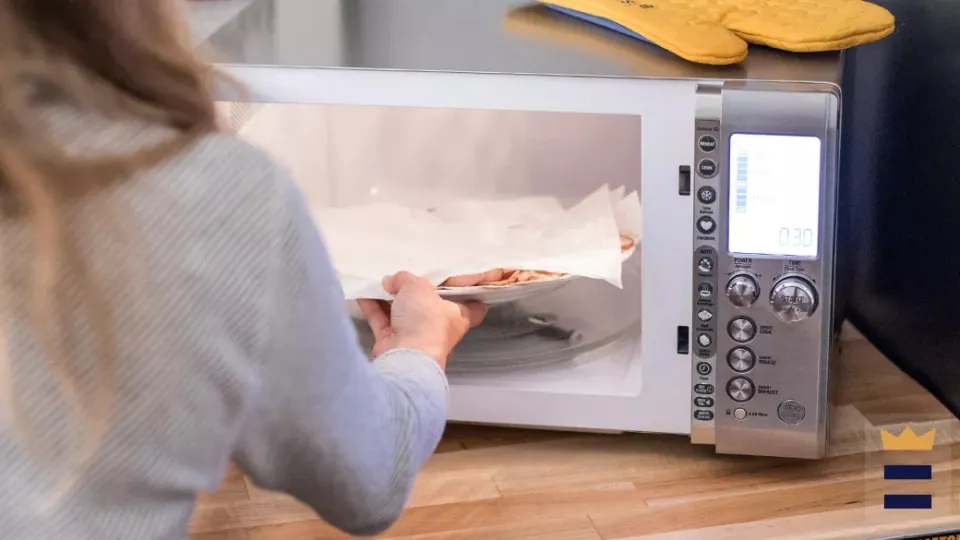Correct humidifier use can significantly enhance living conditions in a dry home. So, how to use a humidifier?
- Put It in a Safe Location
- Use Cold Or Room Temperature Water
- Only Use It When You Need It
Humidifiers can help with issues that affect our daily lives, like static electricity, as well as those that affect people who are experiencing congestion, dry skin, and sinus discomfort.
Please read on.
What is a Humidifier?
You’re probably familiar with dehumidifiers, but what exactly does a plain old humidifier do. In any case, it performs as expected.
A humidifier increases the air’s moisture content as opposed to a dehumidifier, which removes moisture.
A humidifier is a tool that is placed inside and outside the home to create water vapor and raise the relative humidity level there.
You should be aware that the ideal humidity level in your home is around 40% if you intend to use a humidifier there. And, you also need to know how humidifiers work.
How to Use a Humidifier?
Put It in a Safe Location
Verify that your humidifier is out of children’s reach and waterproof. You don’t want your child to get hurt, so you should avoid using certain types of humidifiers that can get very hot.
Condensation builds up inside and around humidifiers in large amounts. Place a tray or piece of plastic underneath your device if you’re setting it on a wood surface.
Additionally, you should aim it away from any outlets so that the vapor shoots upward.
Use Cold Or Room Temperature Water
Have you ever run your humidifier and found a thin layer of black flecks at the bottom? Or perhaps you’ve noticed that a white crusty layer is developing on it?
These are derived from minerals in the water, and hot water contains more minerals than cold water. By consuming fewer minerals, you can prolong the life of your humidifier by preventing the growth of bacteria.
Only Use It When You Need It
In order to combat dryness brought on by air conditioners or to help with allergy symptoms, humidifiers are fantastic. However, if you don’t monitor the humidity levels, running it too much can result in mold or mildew developing in your home.
This leads directly into some frequent humidifier errors that must be avoided.
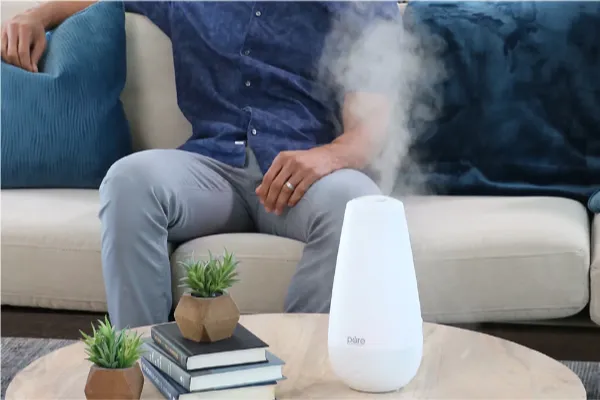
Mistakes to Avoid
Not Paying Attention to Humidity Levels
40% humidity is what experts recommend for your home, as was already mentioned. Any situation could cause allergy symptoms. Any longer, and the walls will begin to develop condensation.
Of course, there is a range. It’s better to aim for 35-45%, although some people advise between 30 and 50%.
40% is the magical number, so being within a few percents of it is perfectly fine.
Not Cleaning the Humidifier Often Enough
More issues than just a rise in bacterial population can be brought on by mineral buildup. It might also obstruct the device’s internal pathways, which might cause it to overheat.
So, overheating may result in electrical issues, device failure, or, in the worst case, a house fire.
Maintenance is necessary for any electrical device.
Using the Wrong Type of Water
The majority of these errors are caused by those annoying minerals that are present in our water naturally.
Minerals are certain to be present if you use tap water. However, if you only use distilled or purified water in your humidifier, you can completely avoid minerals.
Not Emptying the Tank Daily
One of the main reasons for bacteria buildup is failing to thoroughly empty your tank and wash it out before each use. The stuff grows best in stagnant water.
The bacteria are not eliminated by adding fresh water to a tank that is mostly empty. It simply allows it more room to expand.
Not Cleaning and Drying the Humidifier Before Storing It
You wouldn’t put a wet towel back in the closet, and the same rule applies to putting a wet humidifier back in its box.
The moisture is stifled and unable to escape as a result of doing this. Before putting your humidifier away, clean it thoroughly and allow it to fully dry.
Suggested reading: So, does a bedroom have to have a closet? Below will tell you what makes a bedroom a bedroom. Surprise! The answer to this question is not that simple. In order to share our research with you here, we conducted a little investigation. Keep reading.
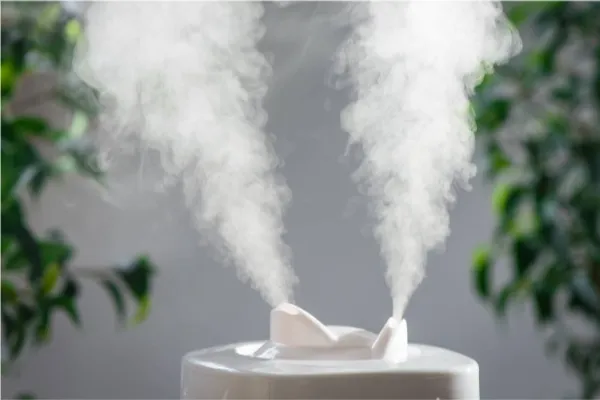
Where Should I Place My Humidifier?
It should go without saying that there are two important considerations when choosing a location for your humidifier.
- Firstly, the humidifier should be placed on a small table, or other piece of furniture at least two feet off the ground.
- To protect your furniture, you should be able to place a towel or other type of sheet under the humidifier.
These are excellent fundamentals to keep in mind because they not only help you narrow down your options but also guard against any damage to your floors or ceilings.
In case of leaks and to prevent unintentional tipping, you should position the humidifier at least two feet off the ground. It’s a huge plus when a humidifier turns itself off automatically if the tank tips.
To cover larger rooms, humidifiers can also produce a thick plume of mist. This plume will hit the ceiling if you place it high up, like on top of a wardrobe, adding moisture and decreasing the device’s effectiveness.
It’s a good idea to put a towel or mat under your humidifier to protect any furniture from harm, such as if you spill water while filling it. It can also give your room a touch of glitz!
Read about Air Purifier Vs Humidifier
How Close Should a Humidifier Be to My Bed?
Placing the humidifier at the right distance from your bed is one of the most important suggestions for using one in your bedroom.
Specifically, we recommend that you keep your humidifier at a distance of around 3 feet from your bed – although there’s no inherent harm in placing it closer, if you’re restricted on room.
This separation is advised for a number of factors. Not to mention, if you have a warm mist humidifier, it needs to be placed far enough away from your bed so that if it falls, hot water won’t spill all over you.
It’s best to keep your humidifier farther away from your bed so you can sleep, unless it is specifically engineered with patented technology to keep noise to a minimum. Your attention may be drawn to something while you sleep, like a fan or water dripping next to you.
Furthermore, you prefer the moisture to be dispersed throughout the atmosphere as opposed to gathering in a small area right next to your nose and mouth. You can breathe more easily because moist air keeps mucus at a thinner consistency. Therefore, although placing your humidifier next to your head might initially feel like a relief, it isn’t advised over the long term.
Where is the Best Place for a Humidifier in My Bedroom?
In terms of location, this is up to you and depends on how your room is set up. If you adhered to our previous advice, you probably already had a destination in mind!
Aside from that, we can suggest positioning bigger humidifiers in the bedroom’s corner. They are not only out of the way, but they are also strategically placed to cover the entire room.
If you only purchased the humidifier to improve your sleep, it would make sense to place it closer to your bed. Ensure that it is only a cool mist! An area where a warm mist humidifier can’t fall and cause harm should be chosen for placement.
A quick tip: avoid placing it in the sun or close to a window.
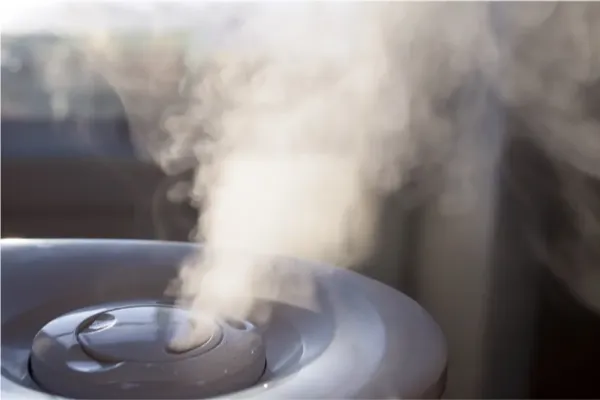
What Humidity Should I Set My Humidifier To?
You can, of course, select the environment that feels most comfortable to you. We advise you to maintain a humidity level between 45% and 50% though in order to avoid issues caused by either too little or too much humidity.
Without needing excessive humidification, this ought to make it comfortable for you to sleep.
What Kind of Water to Use?
Depending on where you live, the mineral content of your tap water varies. They can clog up your humidifier and breed bacteria that is released into the air with water vapor. The minerals can also produce a fine white powder, which can cause crusty deposits in the machine and serve as yet another haven for bacteria. Ultrasonic and impeller humidifiers are more likely to experience these problems.
As long as you keep your humidifier clean on a regular basis, distilled water, which is sold in grocery stores, has fewer minerals but may not be any better than tap water overall.
This is all about humidifiers’ benefits.
What Should I Put in My Humidifier to Prevent Mold?
Mold is a concern when any device has been exposed to water. There are some recommendations for using a humidifier that will ensure it stays clean!
- Add White Vinegar: Add one cup of white vinegar to the tank of your humidifier after adding water, whether it be distilled or not. By doing this, mold growth will be less likely.
- Humidifier Tablets: Additionally, you can buy tablets to put in the tank of the humidifier. They can have aromas and dissolve in under ten minutes. By maintaining the tank’s cleanliness while water is present, they aid in extending the lifespan of your humidifier.
- Add Other Materials:You can also add additional items to the tank of your humidifier. These include a few drops of tea tree oil and even a trace amount of chlorine bleach, though it’s entirely up to you whether you want that substance in your bedroom!
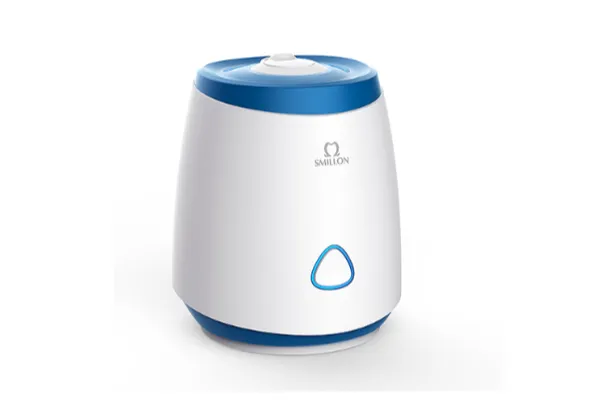
Cleaning Your Humidifier
It’s best to clean your humidifier at least once a week:
Before cleaning your humidifier, make sure it is unplugged. Combining water and electricity can be risky.
Every day, empty, rinse, and dry the base and tank.
Once a week, clean the humidifier of any mineral buildup using vinegar or a different solution recommended by the manufacturer. Then, disinfect it using a 10% bleach solution (follow the directions for your particular model). If you use bleach or any other cleaning agents, be sure to rinse the tank thoroughly with fresh water before using the machine again to prevent the machine from dispersing them into the air.
Regularly inspect your filters or cartridges, and replace them as directed by the manufacturer.
This is the specific guidelines about how often to clean humidifiers.
Do You Need a Humidifier?
You might be wondering: Why would I need a humidifier in the first place?
It depends.
In fact, if a humidifier isn’t used properly, it could potentially create more issues than it solves. However, for some people, a humidifier could mean the difference between calm and agitation in your home.
If you’ve ever found yourself experiencing allergy-like symptoms inside your home, then a humidifier might be right for you. Perhaps the dry air in your home is to blame for your itchy eyes or sore throat.
You can lessen and perhaps even totally get rid of these issues by learning how to use a humidifier.
Tips for Using a Humidifier – Conclusions
Again, how to use a humidifier? You need to follow the basic steps:
- Put It in a Safe Location
- Use Cold Or Room Temperature Water
- Only Use It When You Need It
In conclusion, investing in a humidifier is an excellent way to improve your skin’s condition and make winter breathing easier. Dry air can be very damaging to skin. Now that you’ve read our humidifier usage advice, you know that all it takes to use a humidifier effectively is putting it in the right spot in your bedroom and cleaning it once a week.
